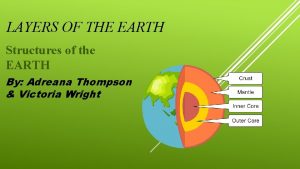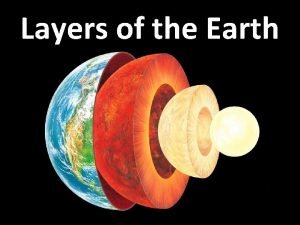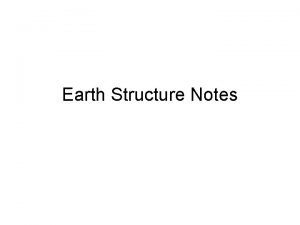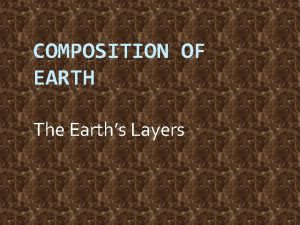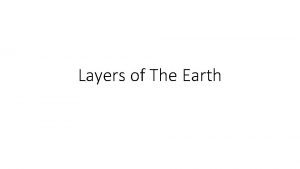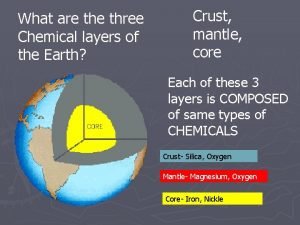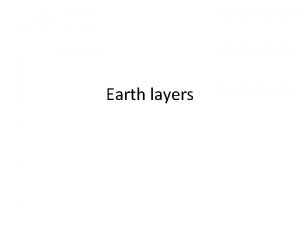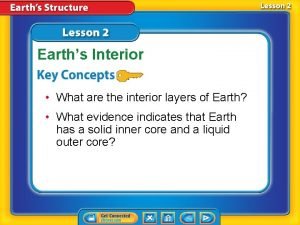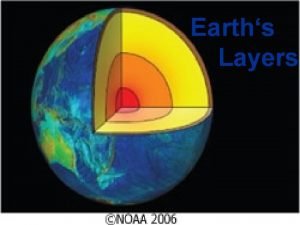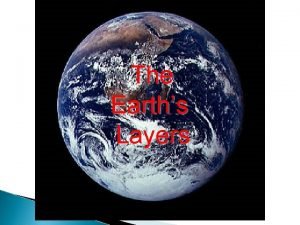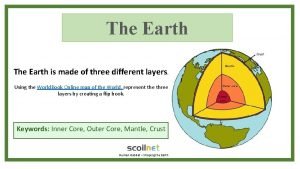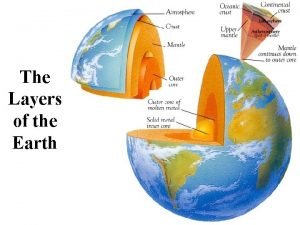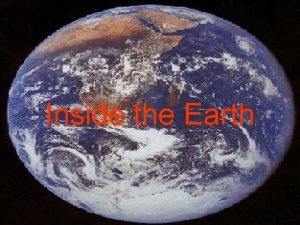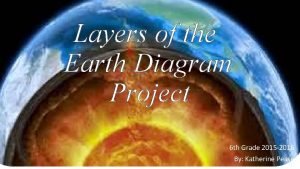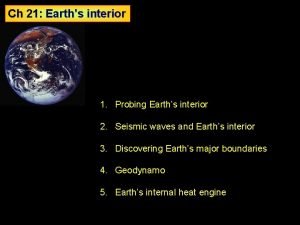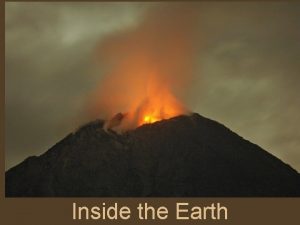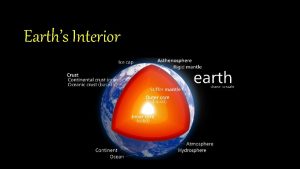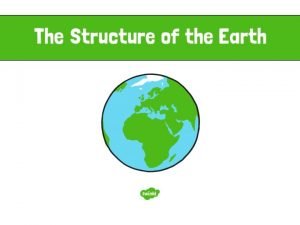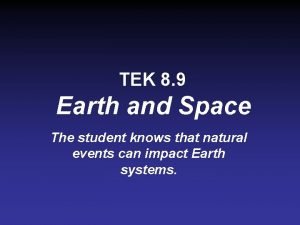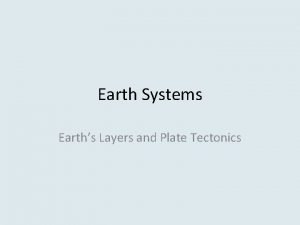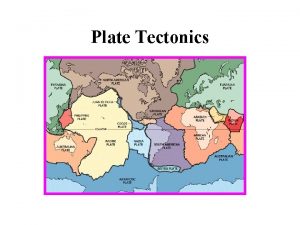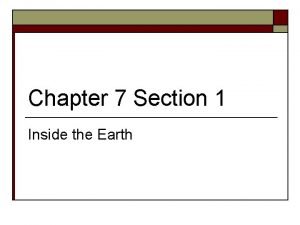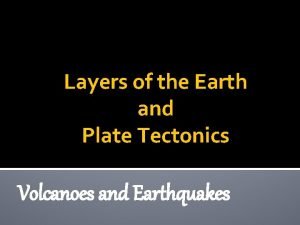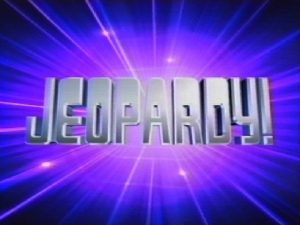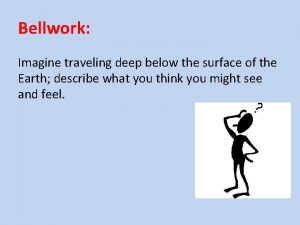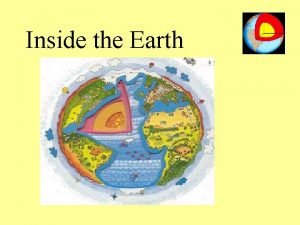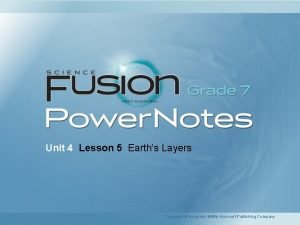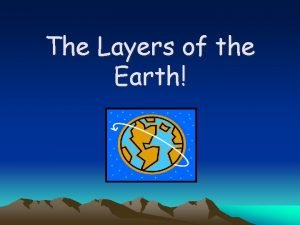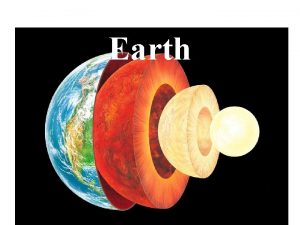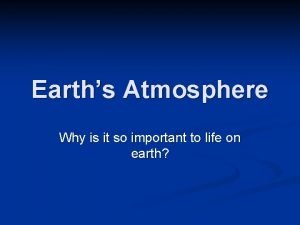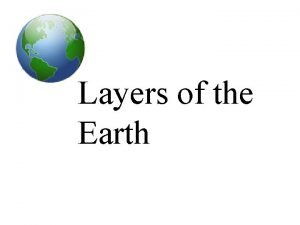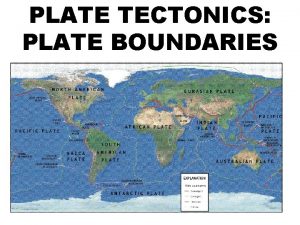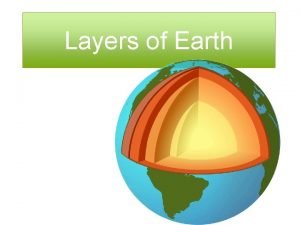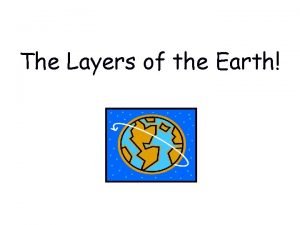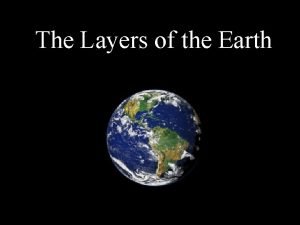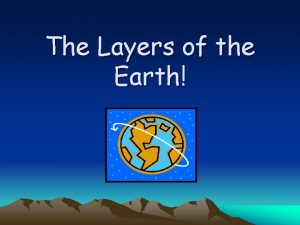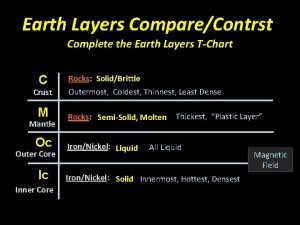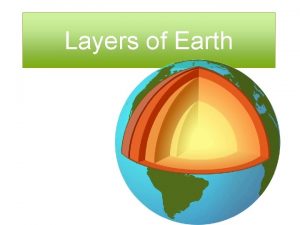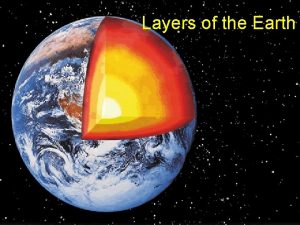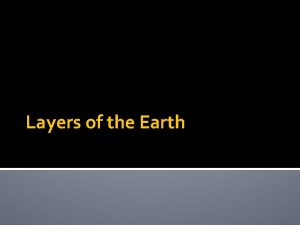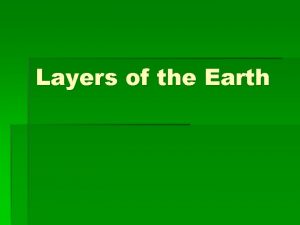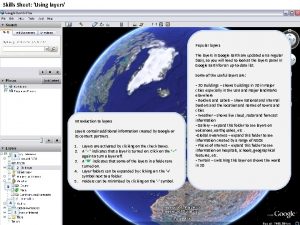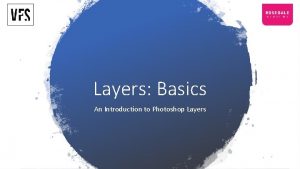Layers of the Earth Layers of the Earth










































- Slides: 42

Layers of the Earth

Layers of the Earth Song • https: //www. youtube. com/watch? v=Q 9 j 1 x. Ga x. Yz. Y

Watch the movie trailer for Journey to the Center of the Earth. Identify characteristics that you think are true and those you think are not true. Be prepared to share. https: //www. youtube. com/watch? v= r. Qx 2 w. Lyagk 4

Essential Question: HOW CAN THE LAYERS OF THE EARTH BE DESCRIBED & COMPARED? 7 th Grade NGSunshine State Science Standard: Compare and contrast the Earth’s crust, mantle, and core including temperature, density, and composition.

The Earth is made up of 3 main layers: Crust Mantle Core

Think of the layers of the Earth like the layers of a cake.

Use the Layers of the Earth Foldable to take notes

Land Ocean O ust r C c i cean Contine ntal Crust st

The Crust • Outer layer • 5 -100 km thick • 2 types of crust – Oceanic (very dense, made of basalt) – Continental (less dense, made of granite)

Oceanic and Continental Crust

• Granite/older Basalt/Younger

The Crust The crust is only about 3 -5 miles (8 kilometers) thick under the oceans(oceanic crust) and about 25 miles (32 kilometers) thick under the continents (continental crust).

Crust Land Ocean st u r C c i n Ocea Continen tal Crust • Thinnest layer of the Earth that ranges from only 2 miles in some areas of the ocean floor to 75 miles deep under mountains • Made up of large amounts of silicon and aluminum • Two types of crust: oceanic crust and continental crust • Composed of plates on which the continents and oceans rest

The Earth’s crust is like the skin of an apple. Turn to an elbow partner and discuss why this statement is true. Next, come up with another example.

Upper Mantle Convection Currents Lower Mantle Middle Mantle

Upper Mantle Convection Currents Middle Mantle Lower Mantle • Solid but capable of flow (like hot asphalt or fudge) • Thickest layer of the Earth (making up 70% of the Earth’s mass) • The hot material (magma) in the mantle rises to the top of the mantle, cools, then sinks, reheats, and rises again. These convection currents cause changes in the Earth’s surface

Outer Core Inner Core

Outer Core • Molten (liquid) metal that is about 4, 700°C (8, 500°F) • Located about 1, 800 miles beneath the crust and is about 1, 400 miles thick • Composed of the melted metals nickel and iron

Inner Core • Solid sphere composed mostly of iron • It is believed to be as hot as 6, 650°C (12, 000°F) • Heat in the core is probably generated by the radioactive decay of uranium and other elements • It is solid because of the pressure from the outer core, mantle, and crust compressing it tremendously

Come up with another analogy and be prepared to share. The Earth is like a peach or a boiled egg. Turn to a seat partner and discuss these analogies.

Crust Mantle Outer Core Liquid Lithosphere – Crust and Upper Layer of the Mantle (asthenosphere) that consists of hot rock of tar -like consistency, which slowly moves Inner Core Solid

Physical Properties and Composition • Composition= what it’s made of • Physical properties= characteristic that is unique and helps to identify the substance (temp, size, shape, color) • Example: Chocolate Chip Cookies • Composition- flour, eggs, sugar, chocolate chips, baking powder, butter • Physical Properties- round, rough, sweet, tan and black, hot, lumpy

Physical Structure of the Earth *Lithosphere- rigid outer layer (crust) *Asthenosphere- solid rock that flows slowly (like hot asphalt) *Mesosphere- lower part of the mantle

Lithosphere • The lithosphere (geosphere) is the "solid" part of Earth. It has two parts, the crust and the upper mantle • The lithosphere “ sits on the” asthenosphere. • The Earths Plates are the lithosphere. • It is the rocky, solid portion of the crust. Remember that it is made up of mostly Silicon( Si) and Oxygen (O).

The lithosphere (crust and upper mantle) is divided into separate plates which move very slowly in response to the “convecting” part of the mantle.

Asthenosphere • This is the layer below the lithosphere. This layer is “ plastic –like”. • It is somewhat solid/liquid. • You can say that it is malleable. • Very important in terms of plate tectonics.


Mesosphere Bottom Mantle • strong, lower part of the mantle • layer between asthenosphere and core


Tectonic Plates • Earth’s crust is broken into about 19 pieces • These plates move on top of the asthenosphere

What do these two images tell us about the layers of the Earth?

Temperature increases as depth increases

Look at the information in the graph and table below. What’s the relationship between depth and density/pressure?

Density and Pressure increase as depth increases

Temperature, Density and Pressure increases as depth increases Add this statement to the arrow going down on your foldable.

Which layer of the Earth has the greatest temperature, pressure, and density? Core

How do we know? • Seismic waves produced by earthquakes travel at different speeds through solid rock and liquids

Summary The earth is layered with a lithosphere (crust and uppermost mantle), convecting mantle, and a dense metallic core. Pressure, temperature, and density increases as depth increases. http: //www. learner. org/interactives/dynamice arth/structure. html

Mr. Lee’s Layers of the Earth Rap

Layers of the Earth Review

Summarizing Strategy

Writing Activity • Write a paragraph about the earth’s layers. Include 4 facts from this presentation.
 How thick is the earths crust
How thick is the earths crust Crust and mantle rap
Crust and mantle rap Layers of earth
Layers of earth Earth's layers questions
Earth's layers questions Which of earth's layers is the thickest
Which of earth's layers is the thickest The earth's layers foldable
The earth's layers foldable What is the thickest crust
What is the thickest crust What are the chemical layers of the earth
What are the chemical layers of the earth Ccuator
Ccuator How did deep mines and wells give clues to earth's interior
How did deep mines and wells give clues to earth's interior What are earth's physical layers
What are earth's physical layers Outer layer
Outer layer Structural layers of earth
Structural layers of earth Earth layers analogy
Earth layers analogy Earth different layers
Earth different layers Layers of the earth
Layers of the earth Layers of the earth jeopardy
Layers of the earth jeopardy Geologic layers of earth
Geologic layers of earth Inner core physical properties
Inner core physical properties Layers of the earth diagram
Layers of the earth diagram Mechanical layers of the earth
Mechanical layers of the earth A dense ball of solid metal
A dense ball of solid metal Layers of the earth vocabulary worksheet answers
Layers of the earth vocabulary worksheet answers Lithosphere
Lithosphere Core mantle crust
Core mantle crust Five layers of earth
Five layers of earth The earths layer foldable
The earths layer foldable Horizontal boundary
Horizontal boundary How many layers of the earth
How many layers of the earth The earth's layers foldable
The earth's layers foldable Egg tectonic plates
Egg tectonic plates Diagram of layer of earth
Diagram of layer of earth Chapter 7 section 1 inside the earth answer key
Chapter 7 section 1 inside the earth answer key Layers of the earth song lyrics
Layers of the earth song lyrics Earth air layers
Earth air layers The earth's layers foldable
The earth's layers foldable The layers of the earth from innermost to outermost
The layers of the earth from innermost to outermost Types of crust
Types of crust The outer core is made up of
The outer core is made up of Geoscience processes
Geoscience processes Exosphere
Exosphere Layers of the earth
Layers of the earth What layers of earth make up the lithosphere
What layers of earth make up the lithosphere


